You know that knot in your stomach when the project budget starts looking less like a plan and more like a suggestion? It’s a familiar feeling in construction, isn't it? That nagging worry that despite all your hard work, the numbers just aren’t adding up. Often, the culprit isn't some huge, unforeseen disaster, but something far more insidious: disconnected data.
Honest to goodness, most of the time, your procurement team is doing their best to snag the best deals, and your project managers are tracking every single move on site. But if those two worlds aren't talking, truly talking, then even the smartest decisions can get lost in translation, leading to those frustrating cost surprises.
The Hidden Costs of Flying Blind: When Data Stays Separate
- Siloed Operations Lead to Budget Leaks: When procurement and project management run in their own lanes, vital information doesn't flow freely, often leading to cost discrepancies and missed opportunities.
- Real-time Visibility is Lost: Without integrated systems, tracking committed versus actual costs becomes a reactive, rather than proactive, exercise, hindering timely interventions.
- Forecasting Becomes Guesswork: Accurate cost prediction is nearly impossible when estimates, purchase orders, and invoices reside in disparate systems, undermining financial stability.
Imagine your procurement team locking in a fantastic price on steel. Great, right? But if that information doesn't automatically update the project's live budget, that savings just... vanishes. It's like finding a twenty-dollar bill in an old jacket only to realize you already spent it elsewhere. Conversely, a project manager might see costs climbing, but without a direct line to procurement details, they can't tell if it’s material prices, labor hours, or maybe a supplier hiccup.
This whole situation creates a constant game of catch-up. Finance teams end up sifting through spreadsheets trying to make sense of everything at month-end, and by the time you spot an overrun, it’s often too late to do much about it. You're constantly reacting to problems instead of anticipating them. Nobody wants to run a business that way.
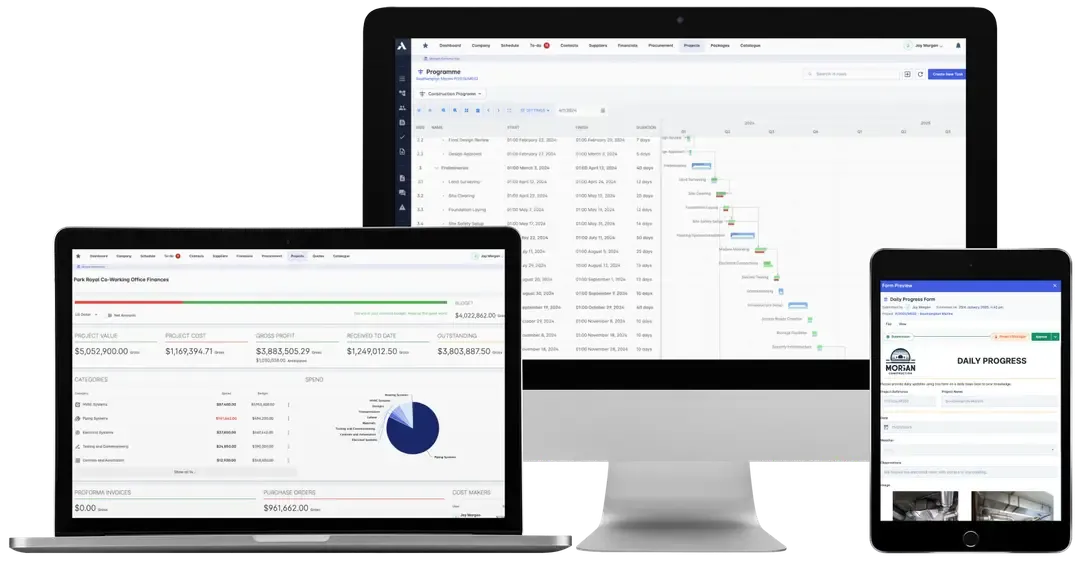
The challenge of disjointed data in construction management, visually represented.
Why Connecting the Dots Just Makes Sense
So, what does this magical integration actually look like? Picture this: you've won a project, and your estimator crafts a super-detailed quote. With a smart platform like Archdesk, that quote isn't just a static document. It transforms into the living, breathing financial blueprint for everything that follows.
When it’s time to order materials, your procurement team doesn’t start from scratch. They generate purchase orders directly from those approved quote items. The system automatically pulls all the specs, quantities, and, crucially, the budgeted costs. This simple link ensures every single order is aligned with the project's financial plan from the get-go. No more guessing games, you know?
But wait, there's more. As invoices roll in from suppliers, an integrated system performs a three-way match, comparing the invoice against the purchase order and the original budget. Any discrepancies? They’re flagged right away, not weeks later when your finance team finally gets around to reconciling everything. This provides real-time cost control, the kind that lets you tweak things before a small issue becomes a massive budget black hole.
The Digital Bridge: How Integrated Systems Transform Operations
Building a robust bridge between procurement and project management means streamlining workflows and enhancing decision-making. Let's delve into the core areas where this integration makes a tangible difference.
From Estimate to Execution: A Seamless Flow
Think about how many steps are involved in getting materials from an estimate to the job site. Historically, that's been a series of handoffs, each with its own risk of error. With integration, the moment an estimate is approved, it informs the entire procurement process. This means:
- Automated Purchase Orders: Instead of manually creating POs, the system can generate them directly from approved estimates, vastly reducing errors and saving time.
- Real-time Budget Updates: Every PO issued immediately reflects in the project budget, giving you an always-current view of committed costs.
- Consistent Data: Specs and quantities are pulled directly from the estimate, ensuring what's ordered is exactly what was planned.
It’s about making sure your paper trail, or rather, your digital trail, is always straight. No more trying to figure out why an invoice doesn't quite match what the project manager thought they ordered. That kind of clarity? It’s priceless.
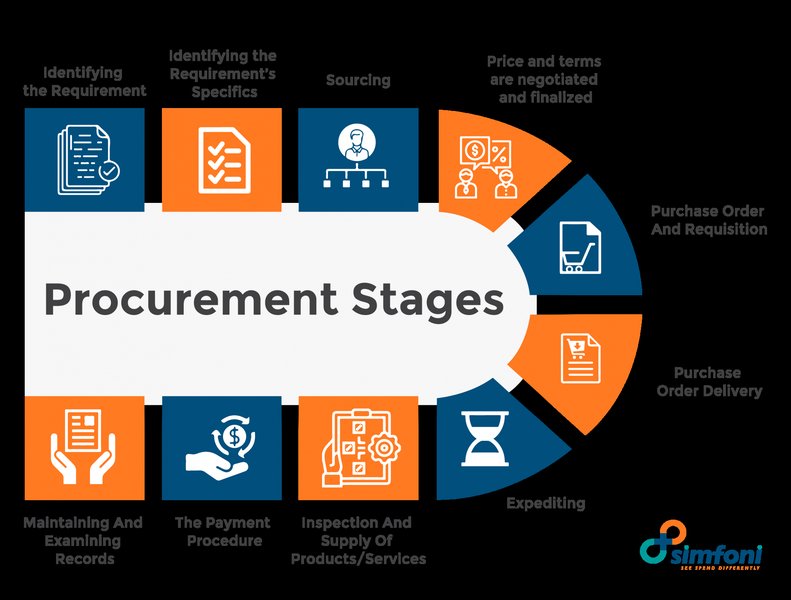
A visual representation of the stages in a typical construction procurement process.
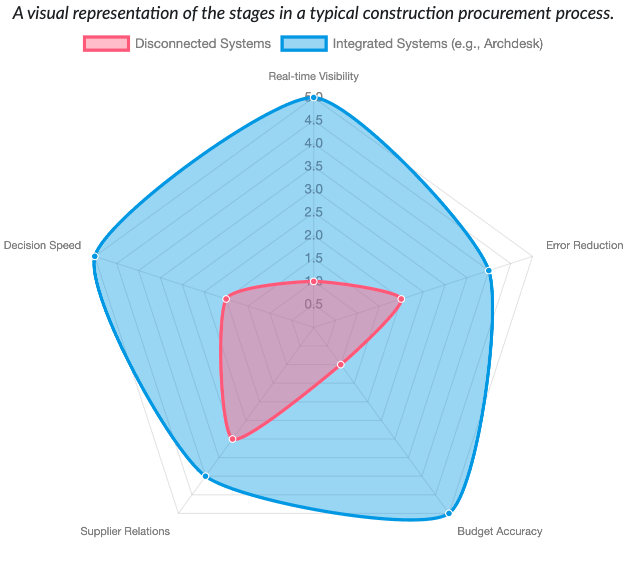
This radar chart illustrates the stark contrast in operational efficiency and predictability between disconnected and integrated systems. Integrated solutions, like Archdesk, significantly outperform traditional, siloed approaches across crucial metrics such as real-time visibility, error reduction, budget accuracy, streamlined supplier relations, and decision-making speed. It really shows you where the critical differences lie.
Managing Supplier Relationships and Payments with Precision
When you're dealing with multiple suppliers and countless invoices, things can get messy pretty fast. An integrated system helps you keep a tight grip on these interactions:
- Three-way Matching: This is huge. The system automatically checks if the invoice, purchase order, and goods receipt all match up. If they don't, it flags it immediately, preventing incorrect payments and disputes.
- Transparent RFQs: You can manage Requests for Quotations (RFQs) and tenders more transparently, making sure you're comparing apples to apples and always getting the best value.
- Automated Payments: Once everything matches, payments can be processed more smoothly, improving your relationships with suppliers because they get paid on time.
It’s like having an eagle-eyed accountant who never sleeps, ensuring every penny is accounted for and every transaction is legitimate. This is especially vital in places like Europe, where complex regulations demand meticulous record-keeping.
The Archdesk Advantage: Unifying Your Construction Ecosystem
While many platforms excel in one area or another – Procore for project management, Autodesk Construction Cloud for design collaboration – they often treat procurement as an afterthought. It's like having a top-of-the-line car but needing a separate GPS and sound system. Archdesk, on the other hand, was built with the idea of a single, unified system in mind.
Archdesk acts as that central nervous system, connecting every crucial part of your construction project, from the initial bid to final handover. It’s not just about having software for each task; it’s about having a seamless flow of data where information travels effortlessly. This is where Archdesk truly distinguishes itself.
Key Features That Make a Difference
What makes Archdesk so effective in enhancing cost predictability? It boils down to its integrated approach:
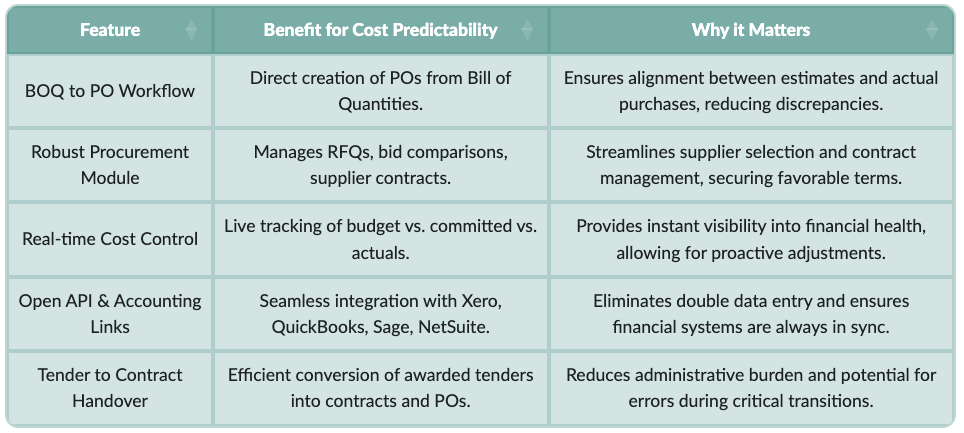
This comprehensive approach means less manual data entry, fewer mistakes, and a much clearer picture of your financial standing. It’s like having a control tower for your entire operation, making sure everyone has what they need to succeed while keeping a watchful eye on the budget.
Overcoming Challenges and Embracing the Future
Adopting new technology isn't always a walk in the park. You might have legacy systems that resist change, or team members who are a bit hesitant. That’s totally normal. But the trick is to start small. Pick one project, integrate the basics, and let your team see the immediate benefits. Archdesk offers guides to smooth that transition, making it less of a headache.
It’s not just about the software itself; it's about getting your crew on board. Quick training sessions that highlight the 'wins' – like reduced paperwork or fewer budget headaches – can make all the difference. When they see how much easier their jobs become, buy-in naturally follows.
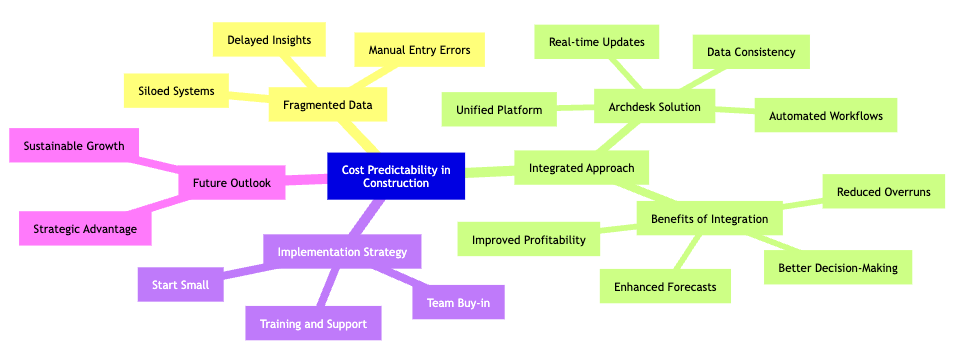
This mindmap visually outlines the journey towards cost predictability in construction. It highlights the problems caused by fragmented data, contrasts them with the solutions offered by an integrated approach, particularly emphasizing the role of platforms like Archdesk, and details the benefits and implementation strategies involved. It really breaks down the complexities into digestible pieces.
What About the Competition?
Sure, there are other big players out there – Procore, Autodesk Construction Cloud, Buildertrend, to name a few. Many are fantastic at what they do. But where Archdesk really shines is its dedication to seamlessly merging procurement and project financials from the ground up. It’s built for those who want comprehensive control without feeling like they’re juggling multiple, distinct tools that don't quite speak the same language. For instance, a mid-sized firm operating in the GCC saw their cost variances drop by 15% after switching to Archdesk, simply because supplier bids flowed directly into their project timelines. That's a noticeable chunk, right?
It’s about more than just managing a project; it's about enhancing project predictability. Archdesk gives you those data-driven insights that allow you to foresee potential issues and make informed decisions. It’s like having a control panel for your entire operation, from bidding to handover, ensuring your projects are completed on time and within budget, with better financial control.
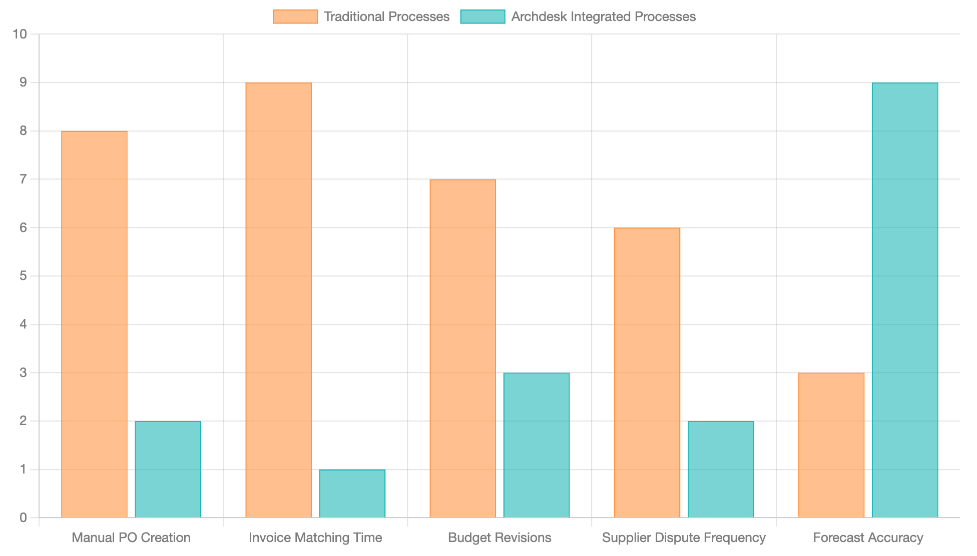
This bar chart demonstrates the significant improvements in various operational aspects when moving from traditional, manual processes to an integrated system like Archdesk. It highlights how Archdesk dramatically reduces the time spent on manual PO creation and invoice matching, decreases budget revisions, lowers supplier dispute frequency, and substantially boosts forecast accuracy. It really makes the case for embracing integration clear.
The Takeaway: Predictability Equals Profitability
Look, integrating procurement and project data isn't some fancy, theoretical concept. It’s practical sense for keeping costs in check and ensuring your projects stay on track. It gives you that much-needed edge in a highly competitive industry, where predictability often translates directly into repeat business and a sterling reputation. If you're tired of those budget headaches, seriously, take a look at Archdesk. It just might make your next project feel a whole lot steadier.
Frequently Asked Questions
What is cost predictability in construction?
Cost predictability refers to the ability to accurately forecast and control project expenses throughout the construction lifecycle, minimizing unexpected overruns and ensuring projects stay within budget.
Why is data integration important for cost predictability?
Integrated data ensures that information from different functions, like procurement and project management, flows seamlessly. This provides real-time insights into committed and actual costs, reduces manual errors, and allows for proactive decision-making to avoid budget discrepancies.
How does Archdesk help with procurement and project data integration?
Archdesk provides a unified platform where estimates directly inform purchase orders, invoices are automatically matched against POs and budgets, and project costs are tracked in real-time. This streamlines workflows, enhances accuracy, and provides a single source of truth for financial data.
Can integrated systems reduce project risks?
Absolutely. By providing clearer visibility into costs and potential issues early on, integrated systems allow teams to identify and mitigate risks before they escalate. This proactive approach helps prevent costly surprises and keeps projects on schedule and within budget.
Is it difficult to switch to an integrated system like Archdesk?
While any change requires adjustment, Archdesk is designed for straightforward implementation. It offers support and guidance to help teams transition smoothly, often starting with a pilot project to demonstrate immediate benefits and build user confidence.
Conclusion
In the whirlwind of construction, where variables can shift faster than the weather, having a steady hand on your project's finances is paramount. Disconnected data sources are a silent drain on profitability, creating blind spots that lead to budget overruns and missed opportunities. By embracing integration, particularly with platforms engineered for this purpose like Archdesk, construction leaders can transform guesswork into genuine foresight.
This isn't just about adopting new software; it's about fundamentally changing how you manage projects, making smarter decisions, and building a foundation for sustainable growth. When every piece of data works in harmony, your projects not only stay on budget but also set a new standard for efficiency and success. Ultimately, that's what we're all aiming for, isn't it?
References
Archdesk Construction Procurement Software - Archdesk
Construction Software Integrations | API & Connectors - Archdesk
How to create a Purchase Order from the Tender?
Construction Procurement Software | Supply Chain Management
How to streamline procurement with Archdesk - LinkedIn
Archdesk: Streamline Your Construction Projects with AI Integration
Getting It Right: Cost Forecasting in Construction | Archdesk Blog





